Direct T1 E1 DS0 Access for SONET SDH
Welcome to another January 2016 issue of GL's Newsletter providing information and insight into our OC-3/12 and STM-1/4 Analysis and Emulation Platform referred to as LightSpeed1000™. Among its many features is direct access to any or all T1s E1s (336 T1s = 16,128 DS0s, or 252 E1s = 15,624 DS0s) inside the OC-12 STM-4 as shown below.
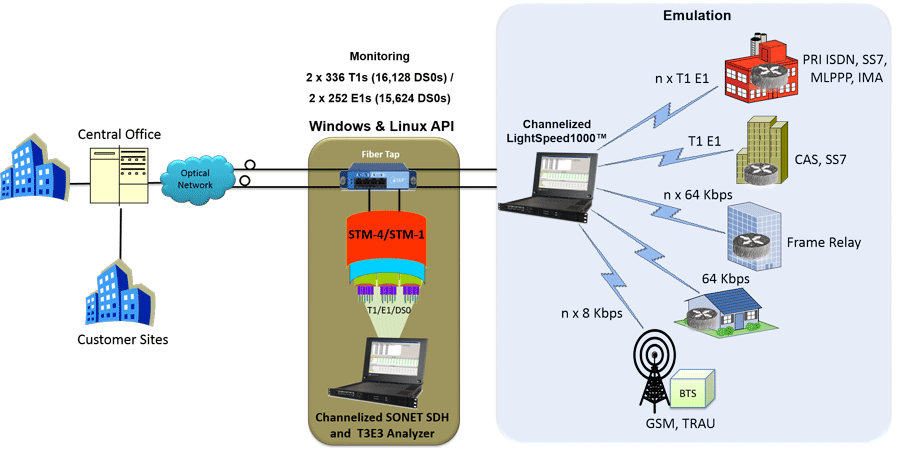
Overview
GL's LightSpeed1000™ comes with all the necessary software for capturing, monitoring, emulation, and protocol analysis over SONET-SDH links, with a price tag that compares very favorably with similar test instruments at 3 times the price. It supports both Channelized and Unchannelized modes. 2 out of the 4 ports are meant for SONET/SDH Unchannelized and unframed data. The remaining 2 ports can be either SONET/SDH or GigE (future) ports meant for Channelized T1 E1.
The LightSpeed1000™ PCIe Card can be installed in a 1U Rackmount appliance or in a portable enclosure as shown below.
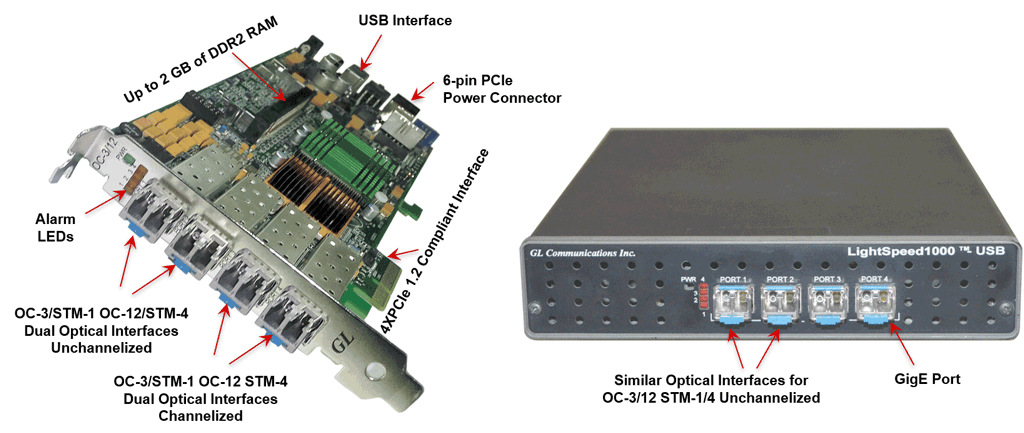
GL's LightSpeed1000™ platform in Channelized Mode provides simplicity and permits direct DS0 level access to hundreds of T1s and E1s within OC-3 STM-1/OC-12 STM-4, and in the near future all the E3s and T3s constituting the OC-3 and STM-1. This platform with its unique architecture eliminates the requirement for external multiplexing hardware and hundreds of cables and connectors. Multiple, interdependent streams of any user-defined capacity can be generated internally, analyzed, and monitored in real-time. For more information on the application, the user can refer to the LightSpeed1000™ in Channelized Mode webpage.
Supported Mappings and Numbering Schemes
[STM4->]STM1 -> AUG -> AU-4 -> VC-4 -> TUG-3 -> TUG-2 -> TU-12 -> VC-12 -> E1
[STM4->]STM1 -> AUG -> AU-4 -> VC-4 -> TUG-3 -> TUG-2 -> TU-11 -> VC-11 -> T1
[STM4->]STM1 -> AUG --> AU-3 -> VC-3 --> TUG-2 --> TU-12 -> VC-12 --> E1
[STM4->]STM1 -> AUG --> AU-3 -> VC-3 --> TUG-2 --> TU-11 -> VC-11 --> T1
Supports standard T1 E1 Numbering schemes with STM-1/OC-3: Lucent, Motorola, and Huawei
Important Features
- 2 Channelized OC-3 STM-1/OC-12 STM-4 SONET/SDH interfaces per Lightspeed1000™ card
- 2 Unchannelized OC-3 STM-1/OC-12 STM-4 interfaces per Lightspeed1000™ card
- Channelized ports act as terminal multiplexers and demultiplexers
- Allows direct access to anything and everything on SONET / SDH - Framing and Payload, including structured traffic (DS0, T1, E1, STS-1, DS3 etc) or unstructured traffic (ATM, PoS, etc)
- Scans the received STM-4/STM-1 traffic and identifies the mapping, tributary type (T1/E1), equipped/unequipped status of the tributaries
- Broadcasts the selected T1/E1 channel data on all the 252 E1's or 336 T1's
- Supports any combination of DS0/64/56/16/8 kbps fractional T1/E1, and N x T1/E1 interface definitions (a total of 252 E1s or 336 T1s – in each port )
- Pluggable SFPs allow Single-mode (SM), and Multi-mode (MM) fiber optic non-intrusive tap
- API for Microsoft® Windows® and Linux operating Systems to develop user specific applications
- Key T1 E1 specific features -
- Comprehensive protocol analysis and emulation - HDLC, SS7, ISDN, CAS, PPP, Frame Relay, ATM and more
- Analysis of DS0s for frequency, power level, spectral display, listen to channel
- GL's proven WCS high level remote interface
- All protocols analyzers can be used with GL's NetSurveyorWeb™
Applications for Direct T1 E1 within SONET SDH
- GL's MAPS™ GSM simulation over A Interface simulates BSSMAP & DTAP messages and signaling specification as defined by 3GPP standards
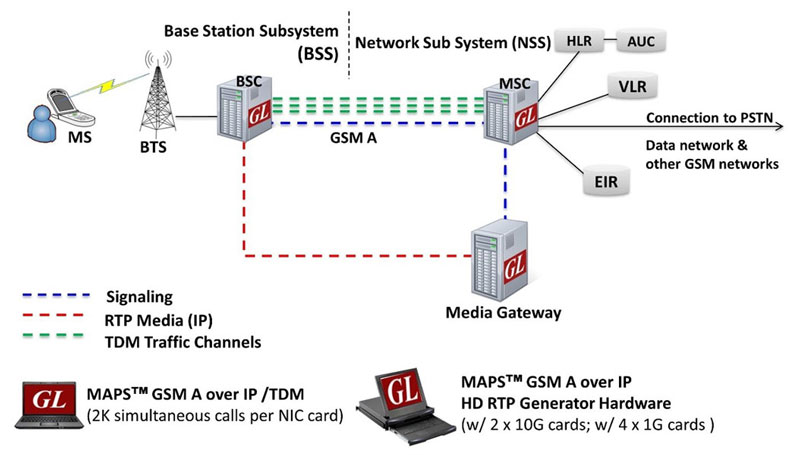
- Monitoring GSM Abis link over channelized OC-3 STM-1 for monitoring RF information, Roaming, SMS, Location update, and more
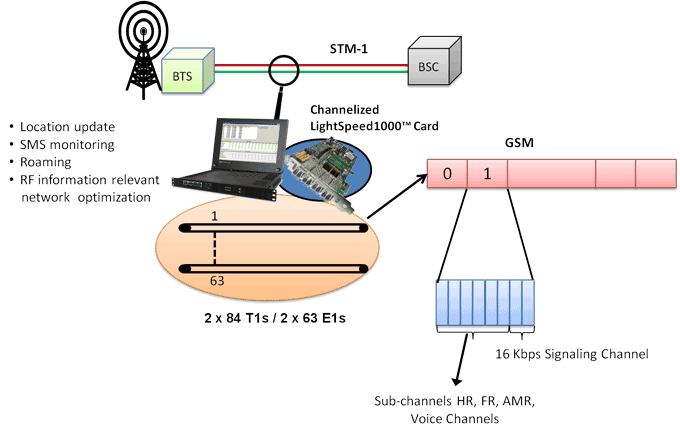
- GL's MAPS™ SS7 simulation over TDM (T1E1) simulates Service Switching Point (SSP). The ISUP signaling specification conforms to ITU-T and ANSI standards
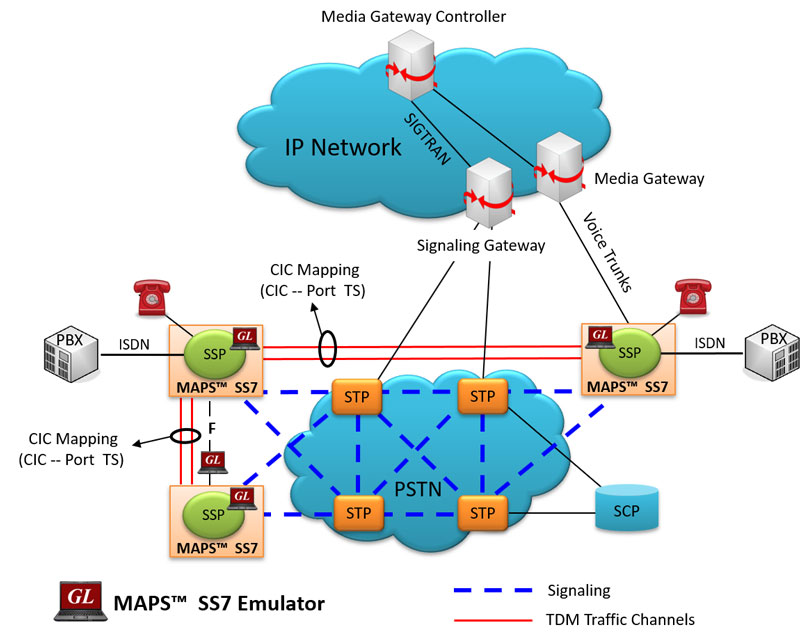
- Testing voice and data services on hybrid networks (such as ATM to SDH)
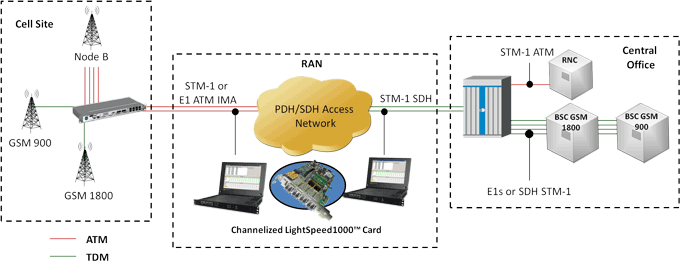
- Non-intrusive protocol analysis and monitoring (ex: Monitor tens to hundreds of SS7 links for signaling and bearer channels)
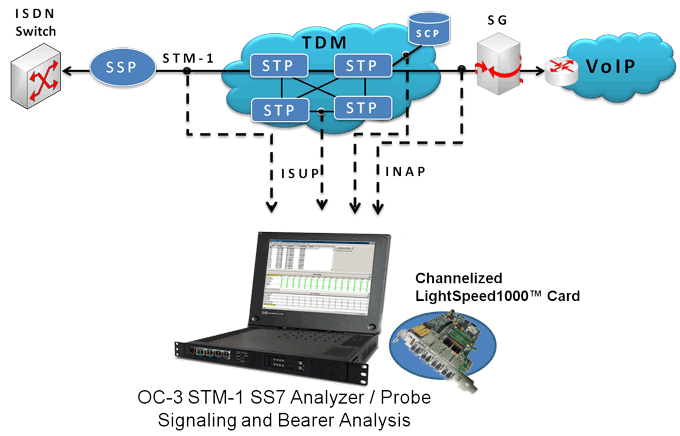
 Back to Newsletter Index Page
Back to Newsletter Index Page